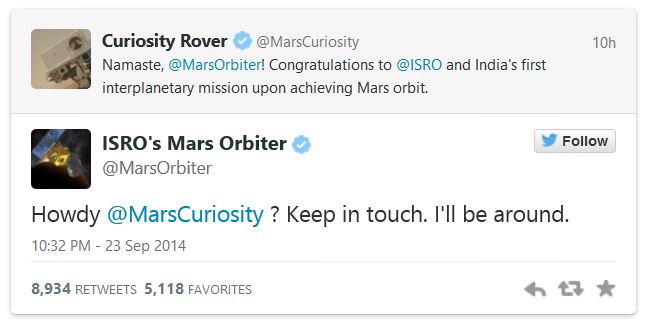India’s Mars Orbiter Mission (MOM) spacecraft was greeted via Twitter after successfully entering orbit of the Red Planet. The Curiosity Rover, a Mars old-timer of two years, sent a welcoming tweet: “Namaste @MarsOrbiter. Congratulations to @ISRO and India’s first interplanetary mission upon achieving Mars orbit.”
The @MarsOrbiter replied: “Howdy @MarsCuriosity? Keep in touch. I’ll be around.”
We jest, of course, about using Twitter for space communications. The Deep Space Network provides critical two-way communications between spacecraft and Earth.
The DSN sends information that guides and controls the spacecraft for navigation, and it collects telemetry of the data — images and scientific information — sent back by the spacecraft. NASA is not the only space agency to benefit from the international network of communications facilities that make up the DSN, as spacecraft from around the world use DSN for communications. In fact, MOM is currently sending and receiving telemetry from the DSN, as well as ISRO’s tracking station in Bangalore.
DSN is the largest and most sensitive scientific telecommunications system in the world. It consists of three deep-space communications facilities placed approximately 120 degrees apart on the globe: at Goldstone, California; near Madrid, Spain; and near Canberra, Australia. This strategic placement permits constant observation of spacecraft as the Earth rotates.
MOM now joins seven spacecraft currently operating on Mars surface or in orbit – including the newly arrived MAVEN orbiter, three longtime Mars orbiters: Mars Odyssey, Mars Reconnaissance Orbiter (MRO) and Mars Express (MEX), and two rovers on the surface, Curiosity and Opportunity.

